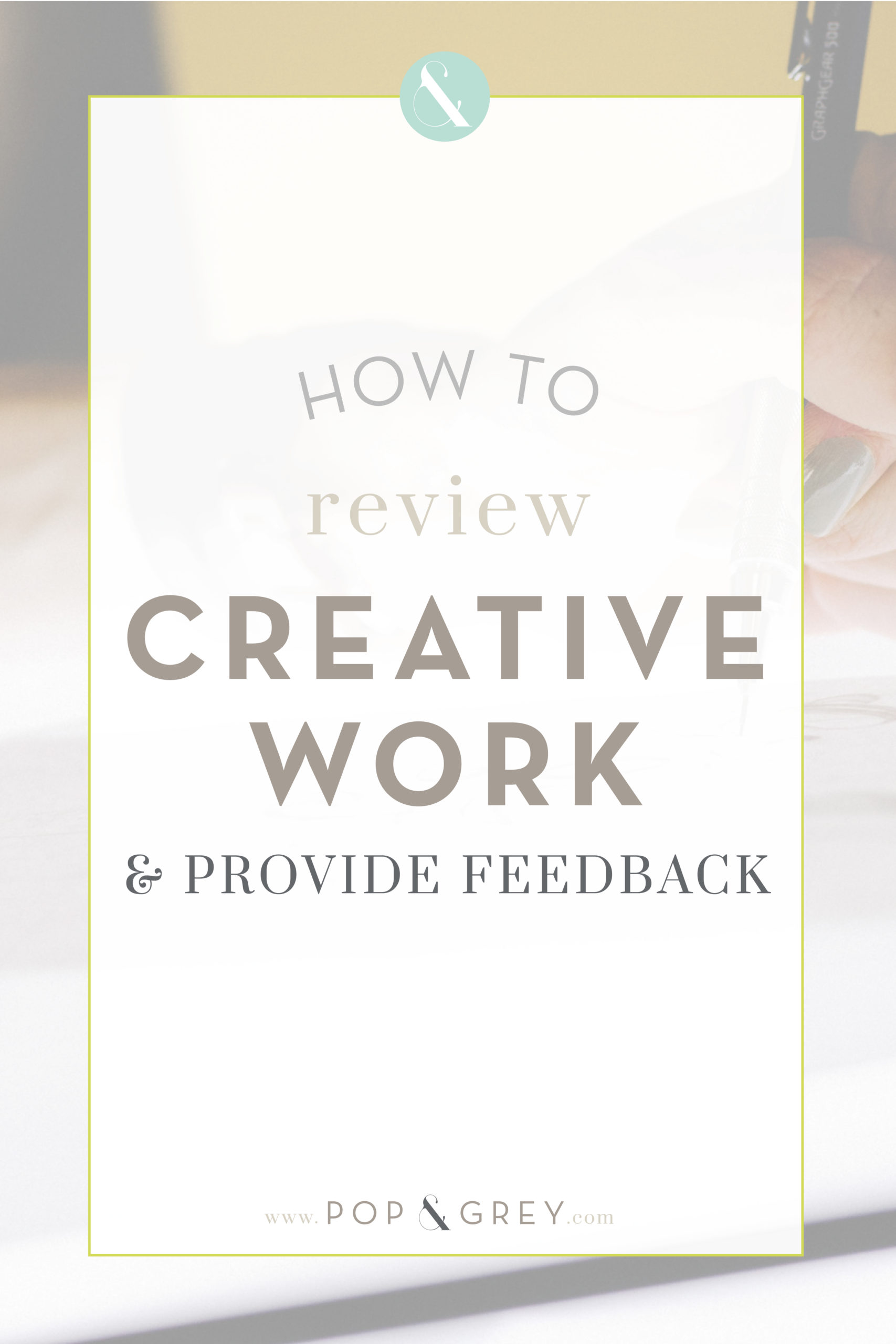
It may sound like an easy task to work with a designer and give a thumbs up or down to the concepts presented for your brand and website. But, I can tell you from working with countless creatives that it’s harder than you think it’ll be, no matter how creative you are yourself. Giving constructive, creative feedback is a skill to master as a business owner. It will keep your project running smoothly and make sure you get exactly what you want and need efficiently so that you can be confident in the final results. You want to be fair, thoughtful, constructive and objective in your feedback. Let’s break down how to provide constructive creative feedback.
Be as objective as possible
It’s important to remember that while your personality and your company’s personality are inextricably intertwined, they aren’t necessarily exactly the same. If you are curious about how to differentiate the two, head over to this post. While it’s important to love your brand and your website, if you rely on gut instinct and personal preferences alone, your brand is almost sure to miss the mark. When providing feedback to your designer, it’s best to acknowledge those personal preferences but then decide if they are relevant. There’s an equal chance that they may or may not be. I love when clients tell me these things and then ask why things were done a certain way. There’s a strategic decision for every detail, but oftentimes there is a lot of flexibility within the strategy that would allow us to make tweaks that make the client happy but still are strategic. If we just design everything around your personal preference, we remove your audience from the brand completely, which is devastating in its results.
Always reference your brand brief
The best way to be objective in your feedback is to continuously reference your brand brief. There’s a reason we dig into strategy and create a brand brief before design ever begins. While you might love one color or font style above another, if you reference your brief throughout the process, it will remind you to remove emotion from your feedback and focus on making sure your brand attracts the right people and evokes the right message. Referencing your brief is the only way to keep you from getting too emotional and making decisions for the wrong reasons. It will ensure that the decisions you make are based on strategy and results rather than feelings. Always acknowledge your gut instinct when looking at a proof and then dig into your brief to see how well it holds up to what you’re trying to convey.
Don’t worry about hurt feelings
You should have a relationship with your designer where you feel comfortable providing feedback no matter what it is. Designers have thick skin, and we’re used to having our work critiqued. Believe me, you can’t say anything meaner than what college professors did twenty years ago during project critiques. If you hired the right person, they expect it as part of the job, and they’re ready for it. Clients who beat around the bush trying to keep an amicable environment usually create projects that drag on and on and never quite hit the mark. As much as we’d like to be, designers aren’t mind readers, and we’re as passionate about your brand as you are. To get the best results in the most efficient way, have open communication, always.
Resist the urge to micromanage
I strive to be a partner with my clients. We both want to create something that you’re proud of, and the only way to do that is together. I don’t want to prescribe every single detail of your brand without collaboration and input from you. But there are productive and unproductive ways to give feedback, and you hired a professional over DIYing for a reason. Micromanaging never leads to the best possible outcome. When you are presented with a design that doesn’t feel quite right, open a conversation rather than feeling the need to give a solution. Finding those solutions is what you hired the designer to do.
Remember that while this may be the first round of proofs you are seeing, the designer has likely been through dozens of rounds themselves carefully choosing (and then scrapping and choosing again) the perfect style, colors and fonts for your project. Ask lots of questions and understand why things were done the way they were before making big decisions. Talk about why you feel the way you do rather than how to fix it. This will be the beginning of a conversation that leads to collaboration and always a better outcome. You want a designer who will challenge you, not just do as they’re told. In those challenging conversations is where we find the truth.
Keep your circle small
If you’re going to show proofs to anyone besides yourself to help you make a decision, please keep your circle very small…like maybe one other person small. In the same way that you are always referencing your brand brief when making decisions, if you are going to ask opinions of other people, they should be part of your target audience (or understand them very well). I’m sure your husband is lovely, but if he’s not your target audience, he shouldn’t get a say. In addition to having opinions that may not have your strategy in mind, too many cooks in the kitchen always spoils the soup. Crowdsourcing creative never works.
If you can provide great, thoughtful feedback throughout your creative project, it will turn a good concept into something really exceptional and create a sense of teamwork that always produces the best work. Have good conversations with your designer, understand their perspective and help them understand yours, and you have the recipe for a brand that will engage your ideal audience and move your business forward.


